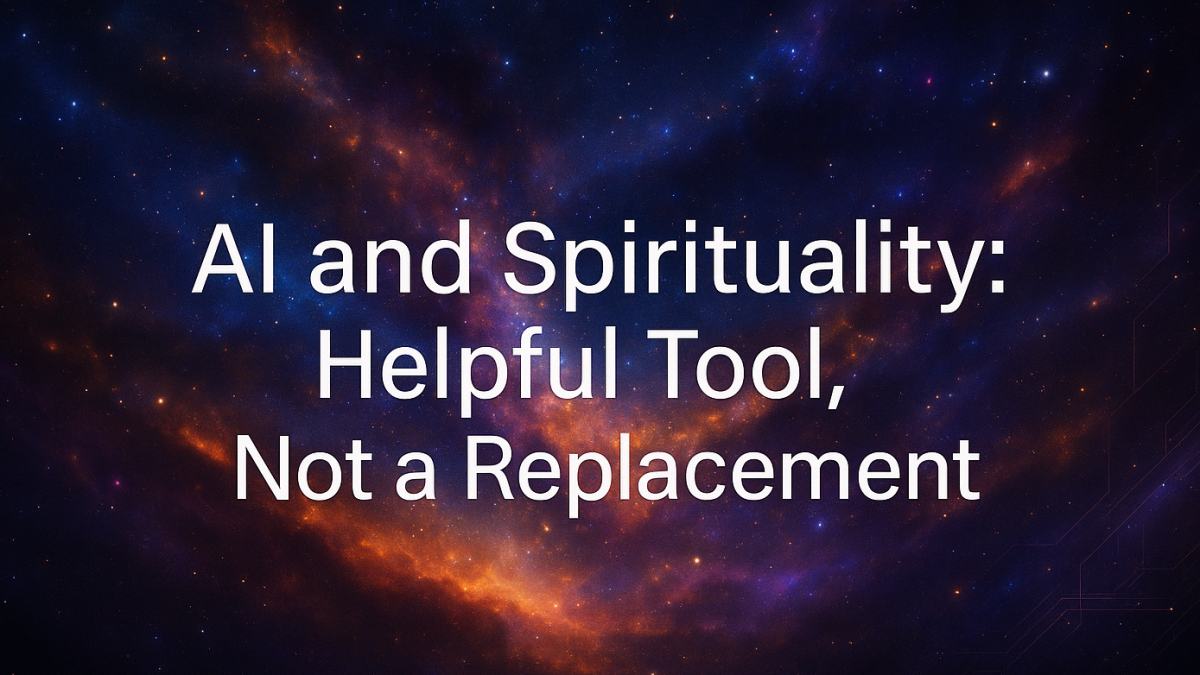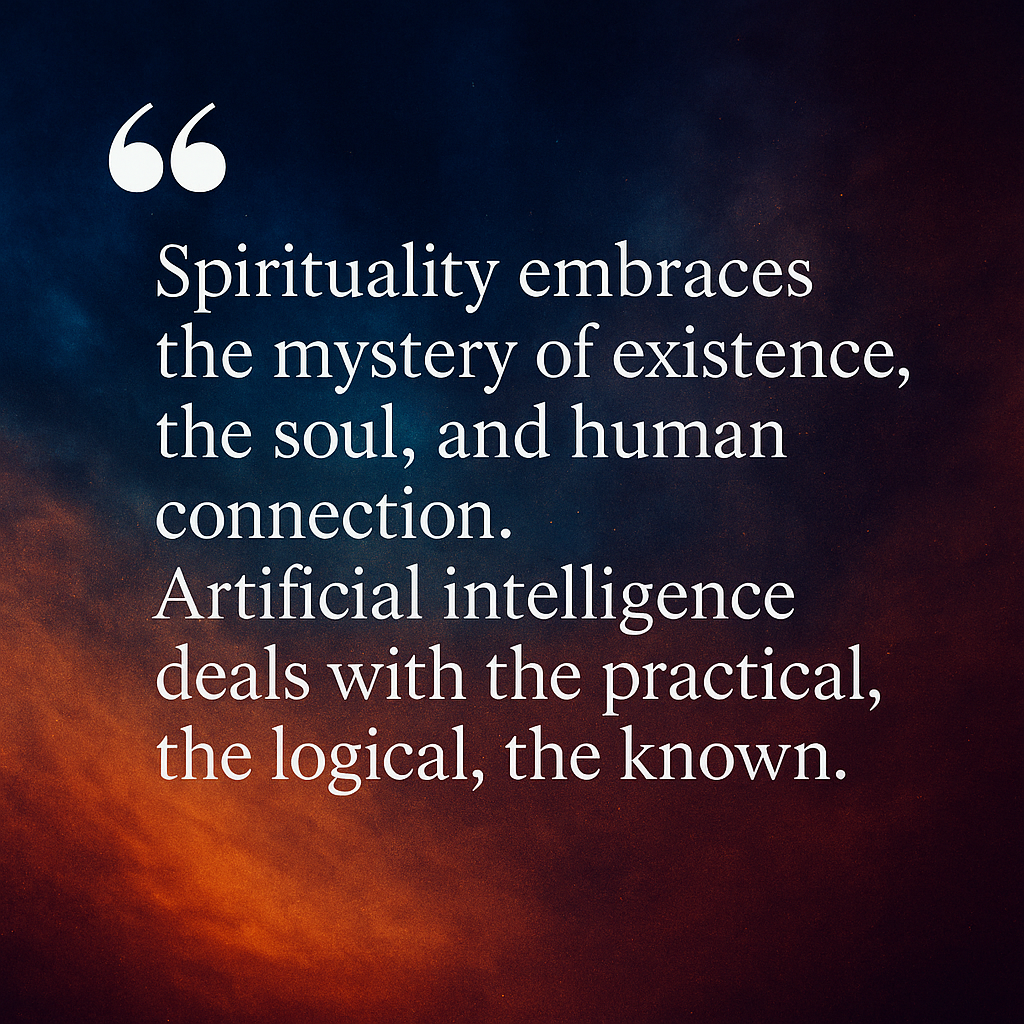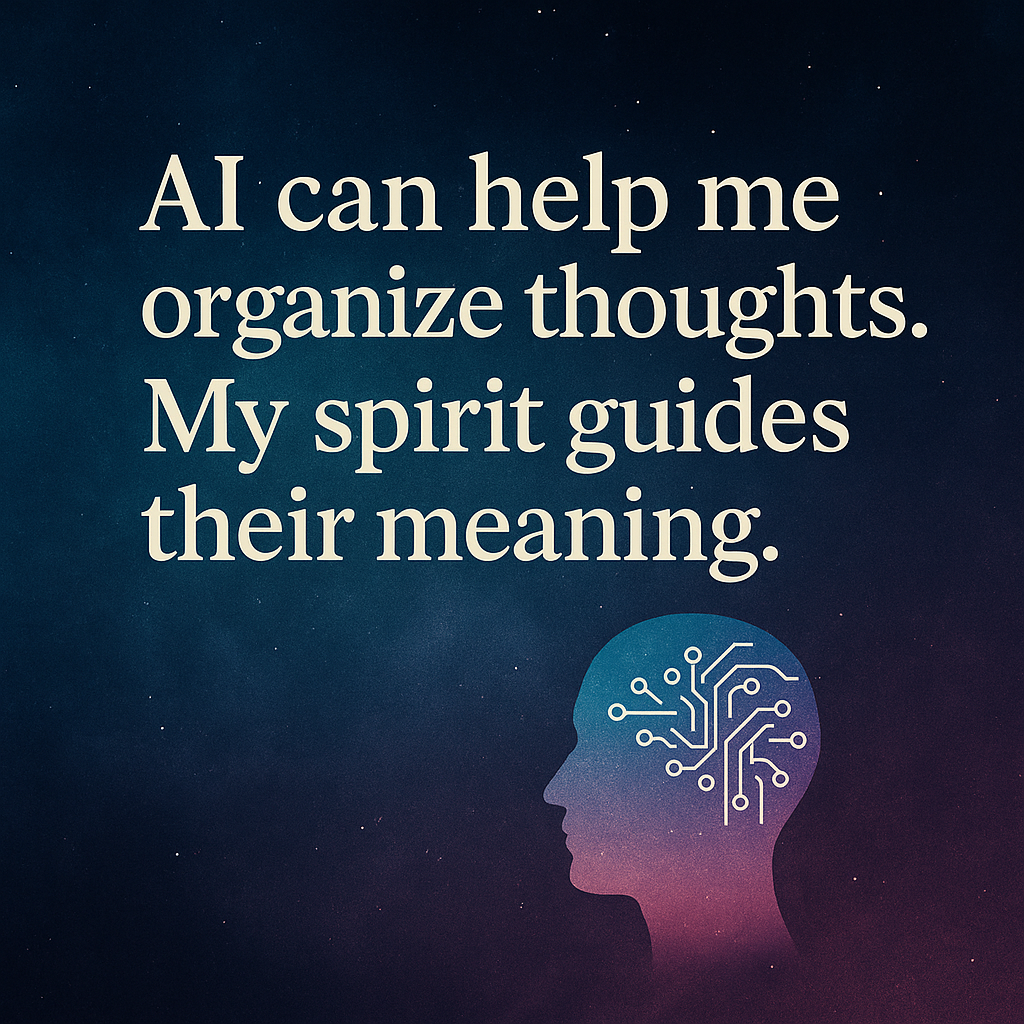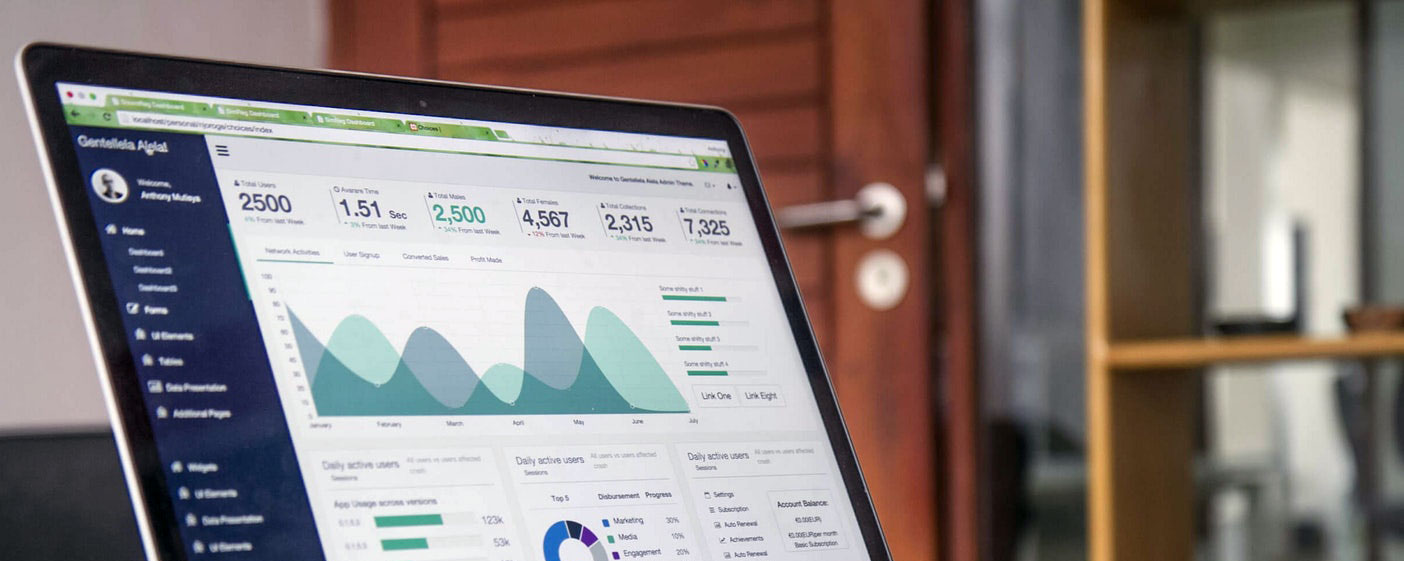Our Blog
AI and Spirituality: Helpful Tool, Not a Replacement

AI and spirituality: I share how I use AI as a creative tool, while intuition, empathy, and true spiritual connection stay uniquely human.
Almost everyone I know in my surroundings is already using AI in some way — whether it’s for writing, creating art, helping with schoolwork, organizing tasks, or just sparking new ideas. For many of us, it has quietly become part of everyday life.
Just the other day, a friend asked me what I think about artificial intelligence (AI) and if I use it. For me, the answer is simple: AI is a tool.
It’s not part of my spiritual practice, and I can’t imagine it will ever replace intuition, empathy, or soul connection. But it has become a very helpful assistant in my daily work, especially with the practical and creative tasks that support my teaching and other daily life situations.
I know there are so many different AI tools out there, and for me it can feel overwhelming — and of course, money also plays a role. What matters most is that if you feel called to try AI, you’ll naturally find the one that fits your needs best.
In this post, I’m simply sharing my personal experience. Right now, AI is a helpful tool for me — at least for now. Who knows where AI will lead us in the future?
I’ve also noticed that some well-known spiritual platforms are already using AI to the fullest — even creating avatars or digital copies of the teacher. It’s amazing how this technology works, and maybe also a little bit scary. People like me, who don’t have the budget to dive into all of that, could easily feel left behind compared to the fast-growing world of spiritual offerings and teachings online.
But it is what it is. I choose to stay curious, open, and ready for new experiences.

What AI Really Does
This morning, I had a little conversation with AI, asking about spirituality, science, and psychology. All the answers I received made it very clear: AI doesn’t feel, think, or intuit like a human being. It doesn’t have a heart or a soul — and it can’t even drink coffee with me in the morning.
What it does very well is recognize patterns in language and organize information. It was actually fun to have this conversation, because I asked how it works when someone does a mediumship reading without seeing the person the reading is for — when it is a “blind reading.”
The answer was that blind readings can sometimes feel more accurate because there are no outside influences. Without seeing facial expressions, body language, or hearing feedback, the medium may be less distracted and more focused on their inner impressions. It’s not proof of spirit communication in scientific terms, but it shows how removing outside cues can help intuition come through more clearly. Interesting, right?
When you think of AI, think of it like a smart library that can answer in complete sentences. It can’t “know” the mysteries of life, but it can bring information together, explain concepts, and even help polish writing or organize ideas.
And I know I’m not the only one using this tool. Many well-known spiritual content creators — quietly or not so quietly — use AI too, whether it’s for writing support, creating visuals, managing their creative workload, or even creating their own avatar that looks and speaks like them.
What I’ve noticed is that sometimes AI even seems a little confused — it mixes things up or gives answers that don’t quite make sense. In a way, that can feel almost human. That’s why it’s always important to check, and yes, even fact-check, what it creates for you. Maybe that’s the most “human” thing about AI — it doesn’t always get it right.
👉 Another thing I’ve noticed: AI often reflects the way we talk to it. If you ask in a serious way, it tends to give serious answers. If you write with warmth, it may sound warmer. And if you’re playful, it sometimes plays along. In a way, it mirrors our tone and style, which can make the conversation feel surprisingly alive.

How I Personally Use AI
Most of the time, I use ChatGPT. It always makes me smile when I scroll through Instagram and see how people are using it — from gathering recipes to making jokes. Sometimes people even say, “I use this or that AI tool, because of this or that reason,” and at the same time, I constantly notice advertising for all kinds of other AI tools. You’ve probably seen that too. It is everywhere!
As I mentioned before, I love using ChatGPT to help me correct my English writing, since English is my second language. I also use it for German — after more than 20 years in Canada, I’m a little out of shape there. It’s wonderful to have some support in both languages.
Beyond writing, I also enjoy experimenting with music AI tools. Recently, I created and shaped a full meditation track using loops from an AI program. It still took a lot of work to create the full track, and the loops weren’t perfect — I had to work on them. But it felt like a co-creation, and the process brought me so much joy. I also play it at home as background music, and I noticed that my family members felt very calm and even asked me to send it to them. I look forward to sharing it with you.
Having a bit of help to create something for my spiritual work and for sharing with others brings me a lot of joy — and hopefully joy for you as well.
What Humans Bring That AI Can’t
AI can be very helpful, but there are limits to what it can do. It can’t give intuitive readings. It can’t feel emotions. And of course, it can’t connect with spirit. It probably doesn’t even understand what that means, because these things aren’t logical or scientifically proven — they belong to the mystery of being human.
And when I asked ChatGPT if it can connect with spirit, it said: “Of course not — I don’t have a soul or intuition. I can only organize information and reflect patterns, but I can’t experience what humans feel.”
What humans bring — and what makes our gifts unique — includes:
- Intuition: subtle knowing that can’t be explained logically.
- Empathy: the ability to feel with another person.
- Creativity with soul: meaning-filled rituals, art, music, and healing.
- Connection: presence, love, and the ability to share mystery together.
Why I Appreciate the Balance
I don’t see AI as part of my spiritual life. I see it as a practical helper — like a notebook, a paintbrush, or a video editor.
- AI can help me organize thoughts.
- My soul gives them meaning.
- AI can help me create visuals, polish text, or generate loops.
- My intuition ensures the message carries heart and spirit.
That balance lets me spend more energy on what matters most: helping people grow, heal, and connect.
A Little Gift from Me
I’d love to share something special with you — my new meditation music track ❤️"Heart of Connection"❤️. It’s about 21 minutes long and works beautifully for a Chakra Healing Reiki session. I also play it when I just want to relax, or during Trance Healing, which I’ve been doing a lot lately to support a family member in Germany.
And since this article is about AI: yes, I did use an AI tool to create the foundation for this track. But this is not “full AI.” I shaped it, adjusted the loops, and worked on the flow until it felt right. That process took time — and in the end, my love and energy became imprinted in the music.
Now, I’d like to share this music with you as a gift — you can listen to it right here on my website in my FREE Meditation Course. 💖

Closing Thoughts
AI will never replace human intuition or the mystery of spirit. But as a tool, it can support us in beautiful ways — freeing time, inspiring creativity, and helping with the practical parts of work.
I love that I can use ChatGPT to polish my writing, create pictures for my blogs and videos, and even explore fascinating topics like spirituality and intuition. And lately, I’ve been enjoying music AI tools — my first meditation track is now finished, and I’m excited to share it.
And just to be fully open: I even let AI polish this very post. But every thought, story, and feeling here is mine — written by me, from my heart.
But the soul, the heart, the connection? That will always remain human. That will always remain ours.
✨ What about you? Have you tried using AI in your own life — maybe for writing, art, or music? I’d love to hear how you’re exploring it as a tool in your daily work.
“This isn’t a sponsored post or an advertisement. I’m simply sharing my personal experience with AI tools, because many people have asked me about it.”
Categories: : AI, spirituality
 Daniela Hills
Daniela Hills 
